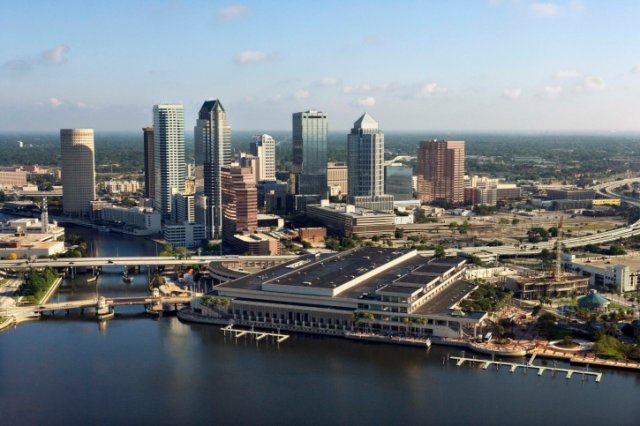Tampa Bay Diversifies Water Sources to Reduce Coastal Risks

Tampa Bay Water provides drinking water for nearly two and a half million residents on the Gulf Coast of Florida. Historically, the utility relied largely on groundwater to satisfy the nearly 250 million gallons (mgd) of water required per day.
The utility’s operators recognized the increasing vulnerability of its groundwater source to saltwater intrusion and completed construction of a desalination plant in 2008. The utility now delivers ‘blended’ water using groundwater, surface water, and desalinated water.
However, Tampa Bay Water faces numerous risks from including more frequent and intense storms as well as flooding and the aforementioned threat of saltwater intrusion. Therefore, the utility operators decided to more systematically estimate its source water vulnerability to projected changes in precipitation levels and saltwater intrusion. In addition, they assessed the ability to meet an anticipated increase in demand of water to 275 mgd by 2035.
The analysis confirmed Tampa Bay Water’s previous good judgment of diversifying its water sources. This also indicated that its upgraded system likely enables the utility to meet its anticipated future needs.
Tampa Bay Water continues to anticipate, plan and prepare for future challenges through working with the Water Utility Climate Alliance, a collaboration among ten of the country’s water utilities that provide leadership on environmental issues. Tampa Bay Water also works with the Florida Water & Climate Alliance, a collaboration among state universities, water utilities, and water management agencies.
How Did They Do It?
- Tampa Bay Water diversified water sources to protect its groundwater resource - Tampa Bay Water invested in a 25 mgd saltwater desalination plant ($158 million) in anticipation and preparation of saltwater intrusion.
- Tampa Bay Water found partners, secured funding, and conducted a vulnerability assessment - Tampa Bay Water used a NOAA two-year grant to fund a collaborative effort with the University of Florida and the Florida Water Climate Alliance to analyze hazards and impacts and downscaling techniques.
- To better understand future projections and their impacts to the Tampa Bay water supply, this research partnership calculated a way to correct bias in statistically and dynamically downsized General Circulation Model (GCM). They are currently attempting to identify bias correction for the Coupled Model Intercomparison Project-Phase 5. Learn more about climate models at Climate.gov.
- Initial results from the research analysis show that there is still high variability in projected precipitation, which supports previous efforts to diversify and expand access to water supply sources.
Similar Cases and More Information
The next phase of this project will explore future population changes and anthropogenic vs. climatic factors affecting water availability in the region. This will assist with evaluating the water management strategies that can reduce risk and increase resilience of the water supply for the Tampa Bay region.
Many communities in the southeast may have to deal with challenges to their source water, whether it is saltwater intrusion, sea-level rise or threats to the facilities infrastructure.
- To learn more about Tampa Bay’s decision to diversify its source water resiliency to current and future conditions view Tampa Bay Water's case study on the Climate Resilience Toolkit.
- For another water utility that adapted against concerns for saltwater intrusion, view the Anacortes Sea Level Rise Study.
References

